January 13th, 2014 §
It’s cold, dark and raining—you know, typical winter—and I’m seriously missing hours spent in the garden, not to mention the antidepressant effect of playing in the dirt. I really liked writing about the High Line a few weeks ago, and it made me realize that I have untold stories of other equally wonderful gardens. Because of that, and because nobody wants to read a post on how I’ve spent the last two days regrouting my shower, let’s get out of here and find something pretty with a short series on some of my favorite gardens that I’ve visited in the past few years.
First we’ll go to England and visit Bourton House, right in the beautiful Cotswold countryside near Morteon-in-Marsh. I stayed in this area for a couple of weeks in July, 2012, and took these photos then.
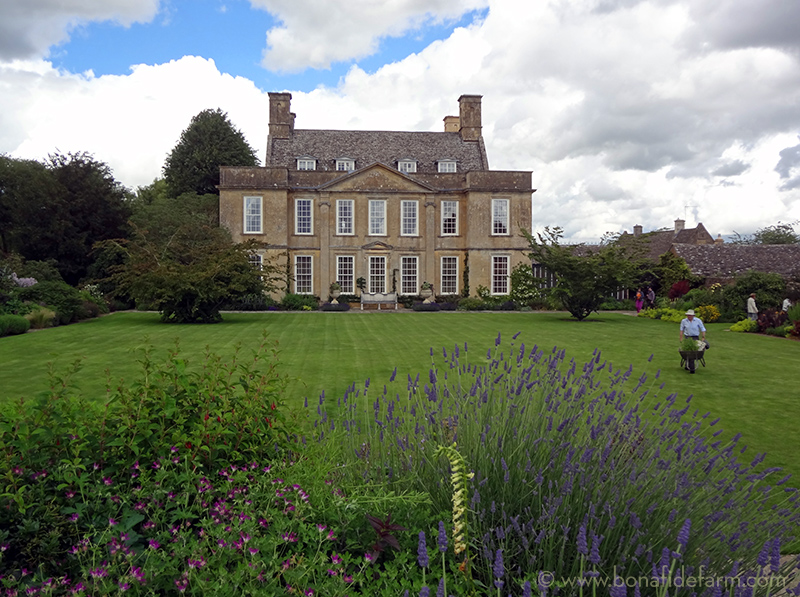
A bit of history from the Bourton House Web site:
Built on monastic lands, Bourton House and its Brewhouse, Stables and Coach House have created a courtyard since the late 16th century.
The house itself was rebuilt as a foursquare Jacobean house by the eminent lawyer, Sir Nicholas Overbury in 1598. At the beginning of the 18th century, the then unfashionable house was once again rebuilt on the earlier footprint by Alexander Popham, the grandson of a Cromwellian general. The house was taken down to its lower ground floor but the whimsical towers retained, the slits replaced by generous Georgian sash windows. The architect remains unknown. This setting has remained unchanged for three hundred years.
The lands originally belonging to the manor were sold in 1851 by Sir James Buller East MP, to the neighbouring Sezincote estate. Today Bourton House is surrounded by its immediate three-acre garden and a seven acre walled pasture, now given over to specimen trees and sculpture.
In 1953 the house and land were sold at auction and there followed a quick succession of owners, six to be exact, until 1983 when the house was acquired by Richard and Monique Paice.


The ornamental garden with its 18th century raised walk overlooking the rolling Cotswold hills; the original kitchen garden and orchard have been transformed in the past twenty five years. This achievement was recognised when Bourton House Garden received the prestigious HHA/Christie’s GARDEN OF THE YEAR (2006) award.
In 2010, the house was sold. The new owners have decided to keep the Garden open to the public with the active help of Head Gardener Paul Nicholls and Assistant Gardener Jacky Rae. Paul and Jacky have been responsible over many years for turning vision into reality and creating the wonderful garden seen today.
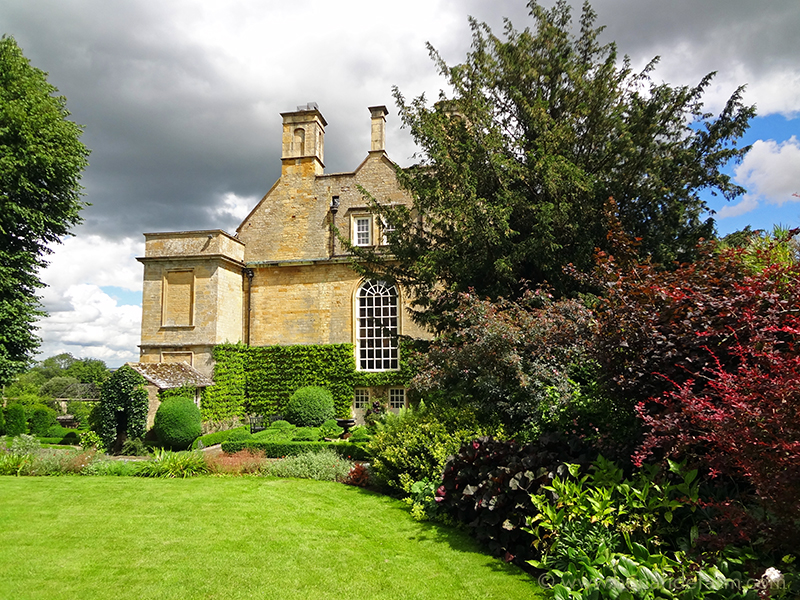
I was really impressed by the use of contrast in the Bourton House garden. As you can see in the two photos above, plants with dark foliage (dahlia and canna up above, and barberry and some other now-unidentifiable things below) are used to break up the swaths of pure green plants and grass. The dark plants create the effect of shadow even in full-sun exposures, and increase the visual depth of the borders.
The estate is surrounded by pastures filled with sheep and cows. It was lovely to hear their soft grazing noises while walking the grounds, and they’re very pretty lawn ornaments! Although I know firsthand that the day-to-day caretaking of livestock can often be the very opposite of bucolic, it was nice to dream a bit and aesthetically appreciate these animals without having to worry about their care.

I was impressed by how dynamic the clouds, sky and weather were in England during my visit. You can see in this series of photos, taken in just a couple hours, that the sun moved in and out from behind the clouds. Rain came and went as showers passed by. This made photographing fun and challenging, and the skies were never boring. It also made everything green, green, green! Just looking at these photos is already helping to alleviate my winter doldrums!
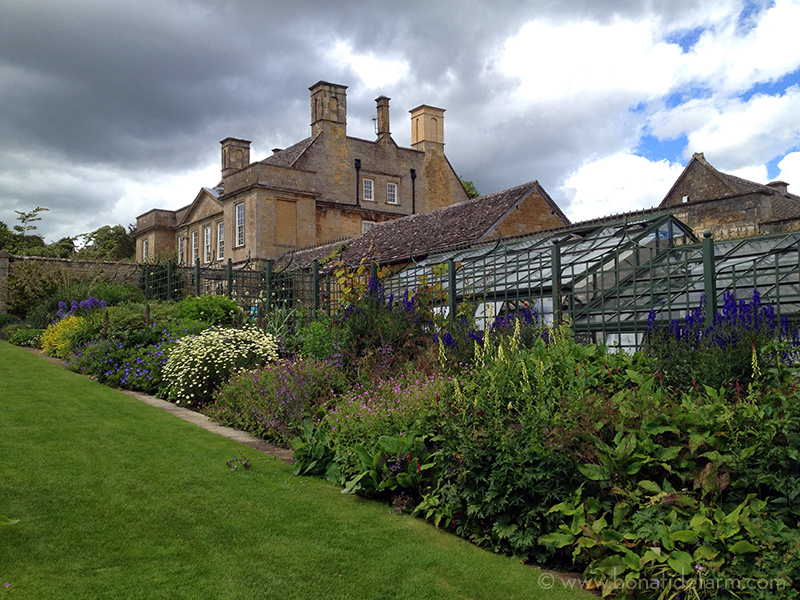
The beautiful glass house wasn’t full as it was high summer in England when I visited, but I can imagine how wonderful that space would be when used to start seedlings and extend the season into fall. Cold frames, below, are built up against the foundation of the glass house and are open to the sun. I love how the more modern glass house is incorporated into the ancient compound without it feeling intrusive or out of place. It’s a good lesson in proper scale and the wonderfully camouflaging properties of dark green paint.
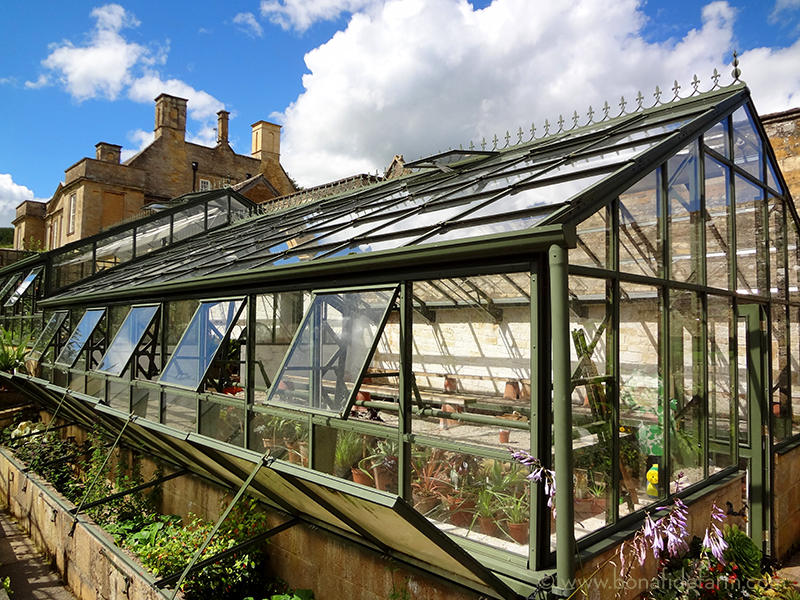
Up next: We examine the Bourton House garden in closer detail, and step inside a gorgeous 16th century tithe barn.
December 26th, 2013 §
Last week I took the train up to Connecticut to visit a friend and caught this view approaching Manhattan. I like how this photo plays with scale, the skyscrapers of lower Manhattan dwarfed by the towers in the forefront, and all of it seemingly floating on a frozen marsh. Nature below, manmade above. You can see the Freedom Tower catching the sunset. I think the design is simple but very elegant, and I really like how the light plays on its different sides.
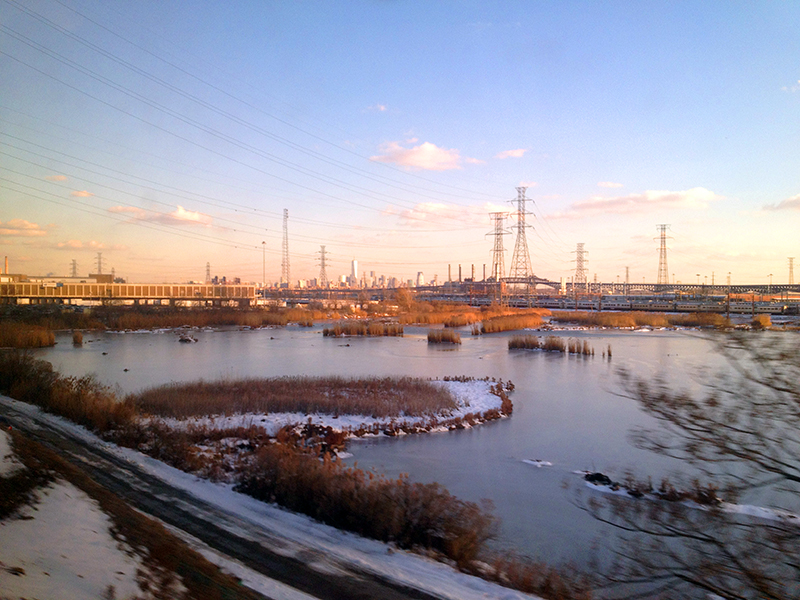
From Connecticut, we took the train into Manhattan for a day and our first destination was the High Line, a public park and garden with planting design done by my favorite garden designer, the Dutchman Piet Oudolf. The High Line used to be an abandoned, overgrown elevated railway until the Friends of the High Line got together in 1999 and garnered enough public support for the park that in 2004 New York City granted $50 million for the project.
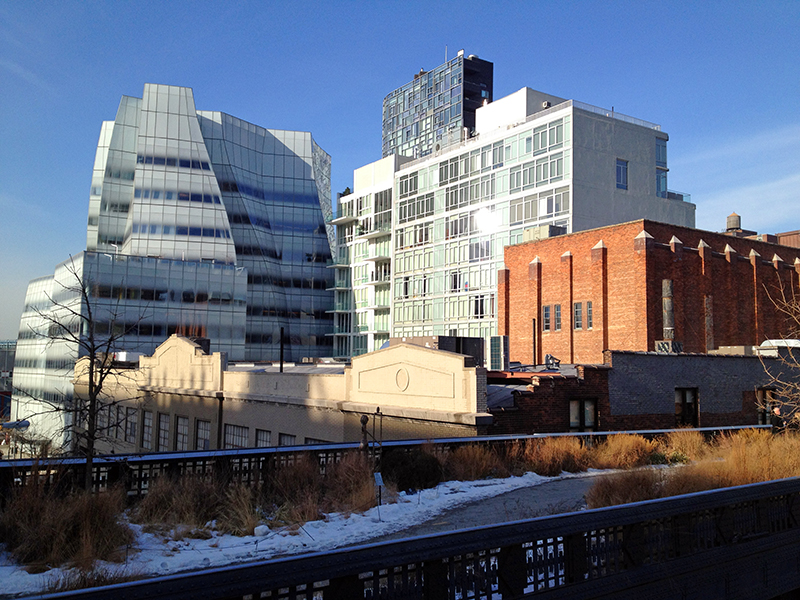
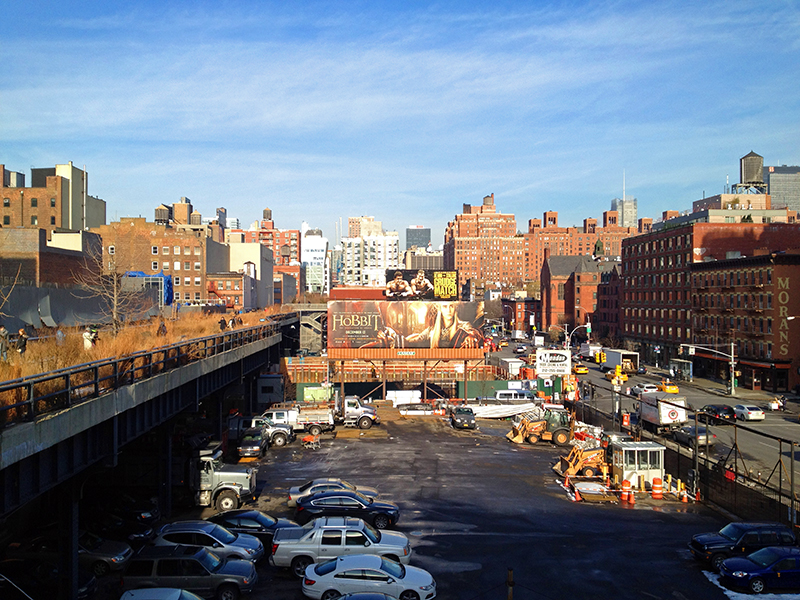
The park has been completed in sections since then, and it’s achieved worldwide recognition for its success at transforming urban blight into public greenspace, and revitalizing a formerly decrepit area of the city. Chicago, Philadelphia and St. Louis are studying the High Line as a potential model for their cities.
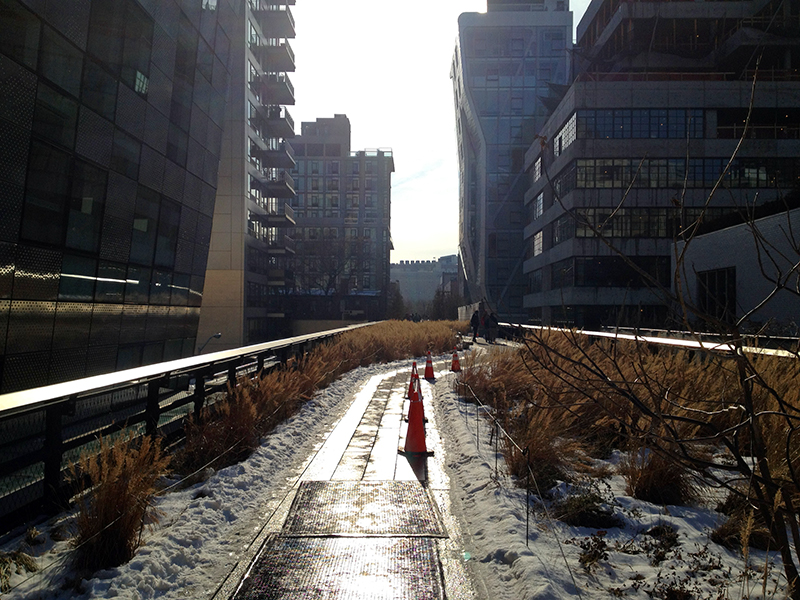
All this to say that although I’ve followed this project for years, I hadn’t actually gotten the chance to visit until last week. And I was so impressed. The hardscape materials—steel, glass and concrete—were combined with enough weathered wood to warm up the garden without losing touch with its urban environment. I loved the little alcoves that jutted off the main path. They formed garden rooms that would give a gathered group of friends a sense of intimacy while still allowing them to be part of the action.


And of course, the plantings were awesome. I know enough about Oudolf’s work to expect a lot of grasses and dried seedheads this time of year, and the High Line didn’t disappoint. Oudolf designs for four-season interest, and I suspect that the dried plant material and stark, berried bushes we saw in winter might be even more interesting than the abundant but overplayed flowers of summer. A blanket of snow threw all the plants into beautiful relief and was an extra bonus.
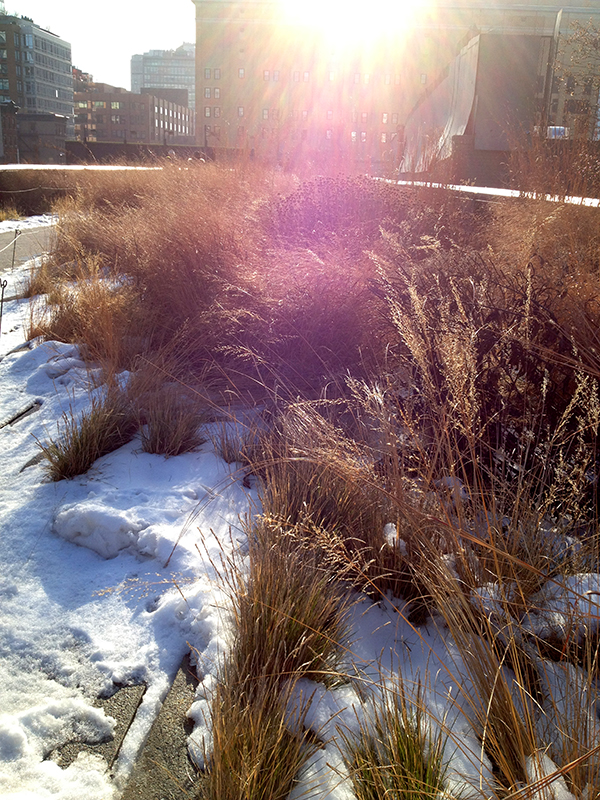
I know “naturalistic,” “new perennial,” and “meadow” planting are so trendy in garden design right now, and I also know just how much work and knowledge it takes to put together a garden design that replicates a natural meadow. But I was really struck, as I walked the High Line, by how it looked like one could have just transplanted a section of my front yard right into Manhattan. If that was Oudolf’s intention, and I believe it was, no doubt he succeeded. And maybe I succeeded too, by setting up my home in a natural, beautiful meadow without having to plant it first! Art imitates life, life is—if we keep our eyes open—art.
Bonafide Farm, February 2013
December 9th, 2013 §
Well, that was the best kind of winter storm. Hyped just enough to get us all excited, but delivering only enough precipitation to make things look interesting without damaging trees or taking down the power (at least not here—others in Central Virginia weren’t so lucky). Perfect. Here are some scenes from this morning. Too bad the sun’s not out—that would have made for some beautiful photos. Instead, it’s so dark out it looks like 4:30 p.m. After three days of grey, I am definitely ready to see the sun again.
But it looks like more snow is on the way tonight and tomorrow…and this storm hasn’t been hyped at all which usually means it will amount to something!



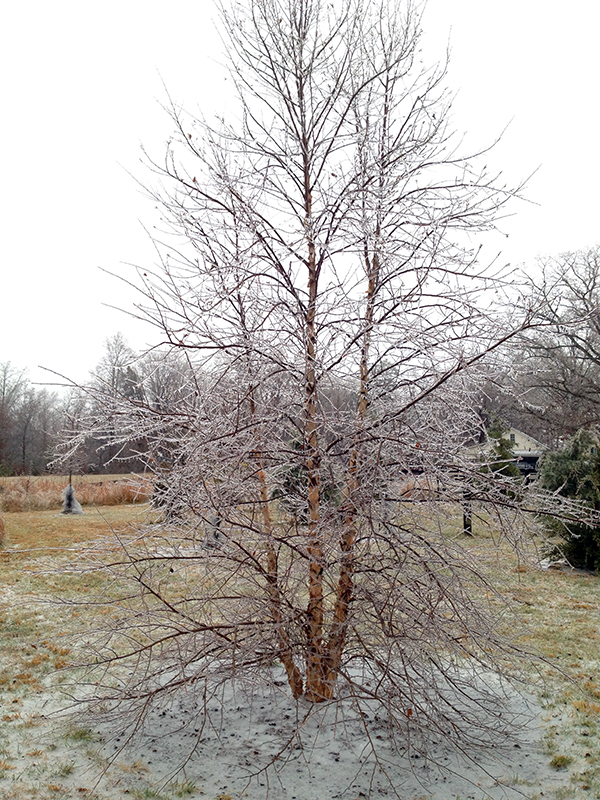
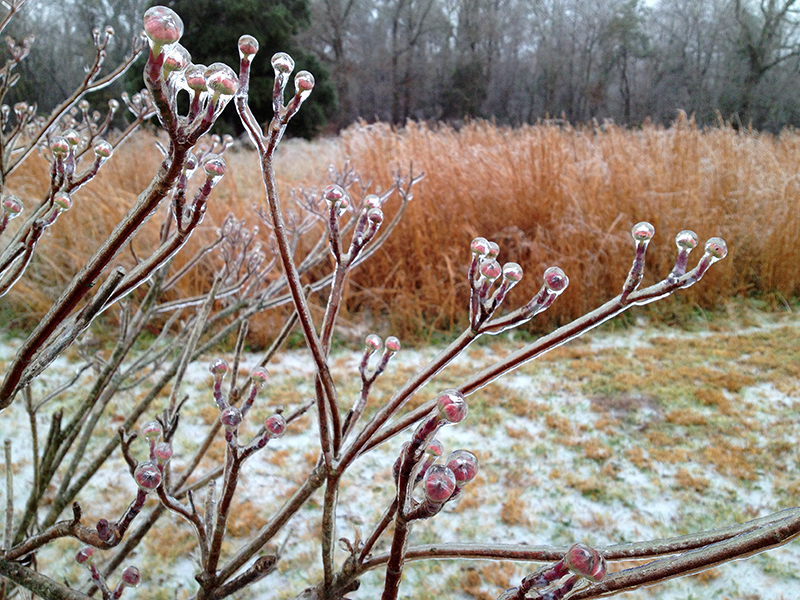



November 25th, 2013 §
As we head into the last month of 2013, I figured I better record some of the larger projects I undertook this year but didn’t manage to write about. I know they’re no longer newsy, but I find that I frequently refer to my own blog to jog my memory about when I did certain projects, so it’s important to get them up here even if they’re month’s late.
First up, the ironic hydrant installation. Backstory: for the first year I gardened here, I carried 5 gallon buckets of water, one in each hand, to water the vegetable garden. Then I wised up and ran a few hundred feet of garden hose from the spigot on the well house. It lay across the field and driveway all summer, in all its crappy artificial green glory, and made not only an eyesore but a pretty annoying mowing obstacle.
Of course, each of these summers saw record high temperatures, summer droughts, and even some pretty serious storms that killed the power for sometimes up to a full week. I did my best to keep the garden watered, but finally told myself my plants had better grow some deep roots and fend for themselves. I threw on a thick layer of straw mulch and walked away.
Come spring 2013, I decided it was time to get some proper water out to the vegetable garden. So I called a nice guy and we set a date for him to come install a water line and frost-free hydrant. And then it started raining. And didn’t stop all spring. Which was great for my young garden, but we kept having to push back our installation date because it was raining too much to open the deep trench that was required to house the water line. And so, with these flooded conditions it was June 25 until it was dry enough to install the hydrant.
But the crew arrived that morning and within a few hours had opened a deep trench all the way from the wellhouse, where all my plumbing is located, to the garden.
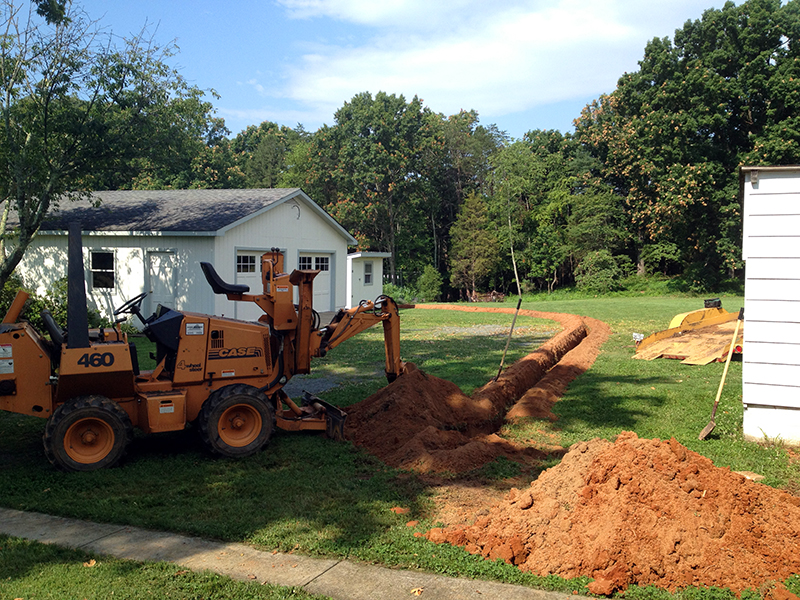
They installed a new water line coming through the foundation of the wellhouse basement and ran pipe in the trench…

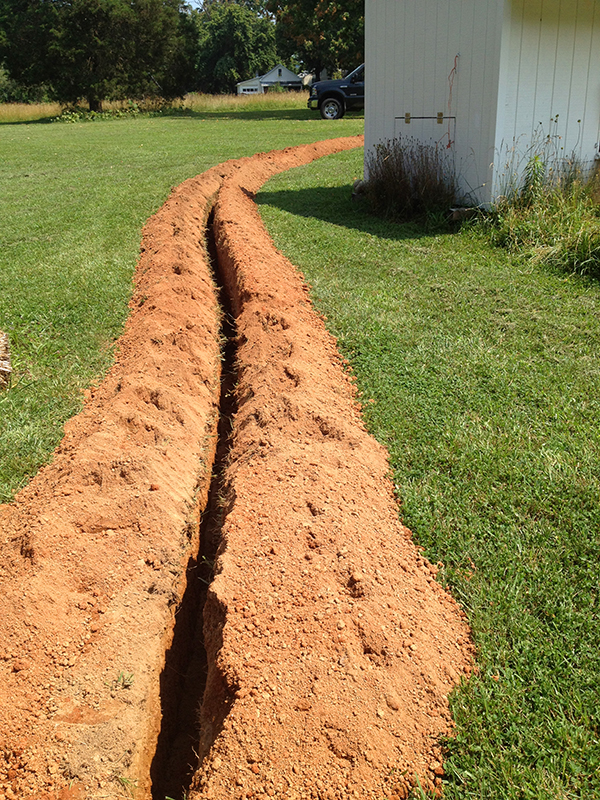
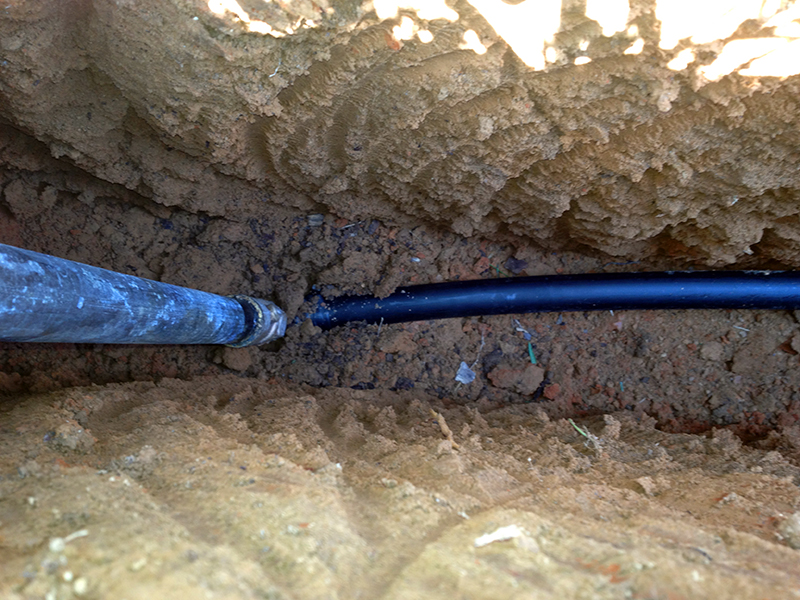
...and out to a new hydrant right next to the vegetable garden. I chose to not put the hydrant within the garden so I could use it to fill the chicken waterers without going in the garden. The photos above give you a good sense of the native red Virginia clay that I’m working with as I build my gardens, and is a good illustration of why I get so excited when I can eventually turn this into black, crumbly, worm-filled soil!
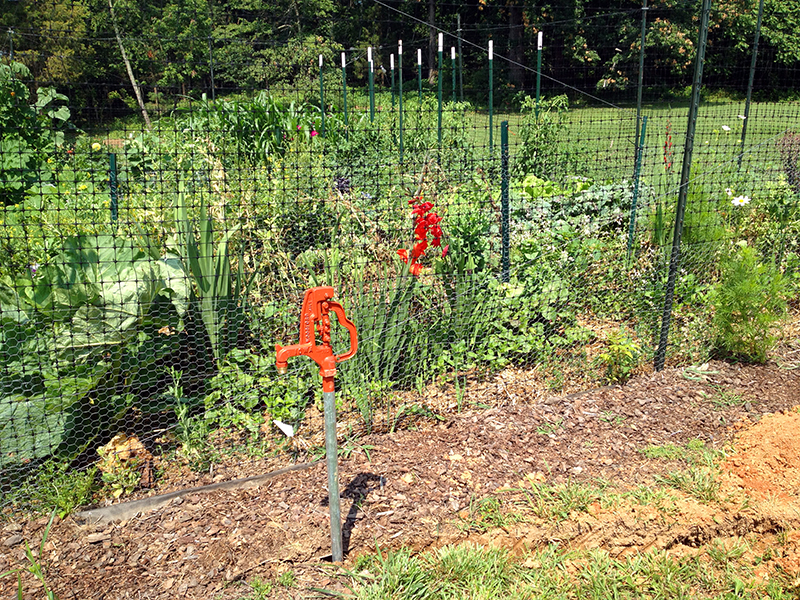
And now I have an awesome water source right where I need it. That I used to water the garden exactly twice this year, as the rain continued and kept things so happy that supplemental water was totally unnecessary. You can see in that photo how far along the garden was on June 25, without any extra water at all.
I know there are bound to be more summer droughts, but I sure was laughing that the year I chose to install the water line is the year I didn’t end up needing it! Oh well. Every little bit of infrastructure I add to this property improves it and takes me a step further along the path of carving a working homestead out of a field.
November 24th, 2013 §
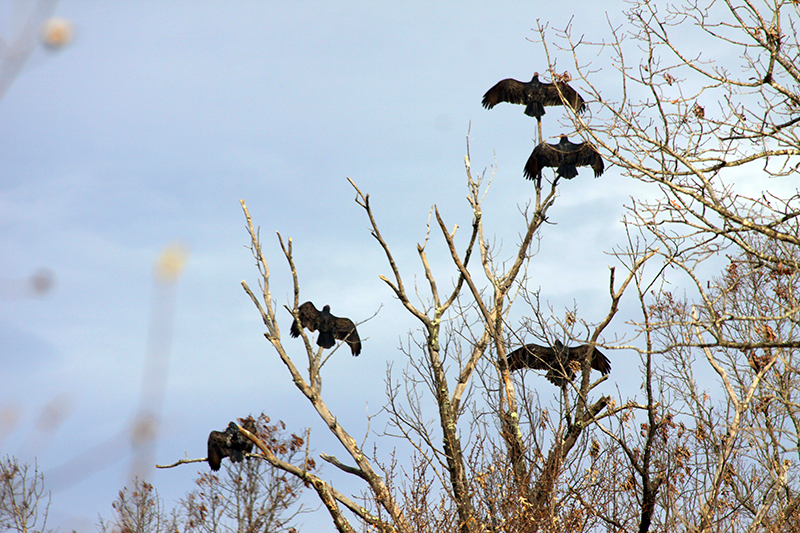

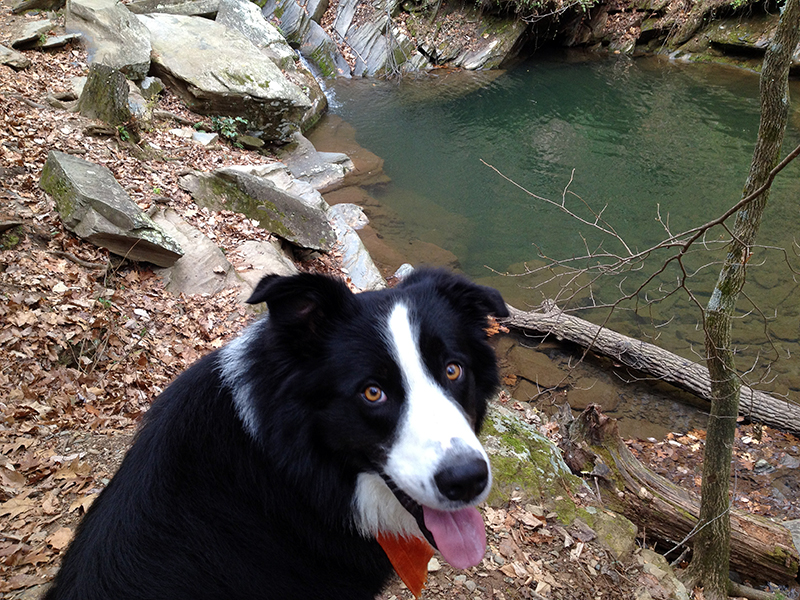
A friend and Tuck and I took a long hike up to Blue Hole and further up the mountain to Shenandoah National Park.
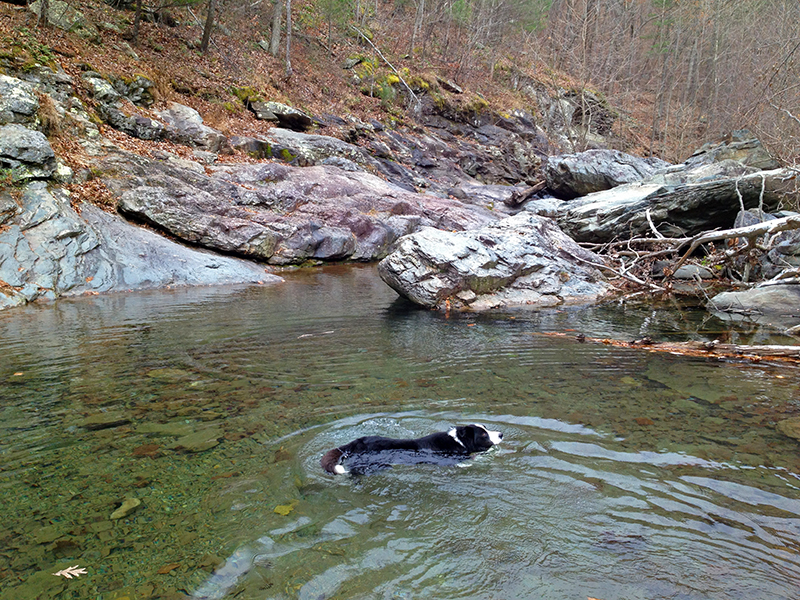
Tuck in one of the swimming holes along the North Fork of the Morman’s River. It hasn’t rained in a long time, and the water was low and crystal clear, the rivers easy to cross. This is the first and last time during the hike that Tuck got totally submerged. He figured out pretty fast that mountain streams in late November aren’t the same temperature as they are in summer!
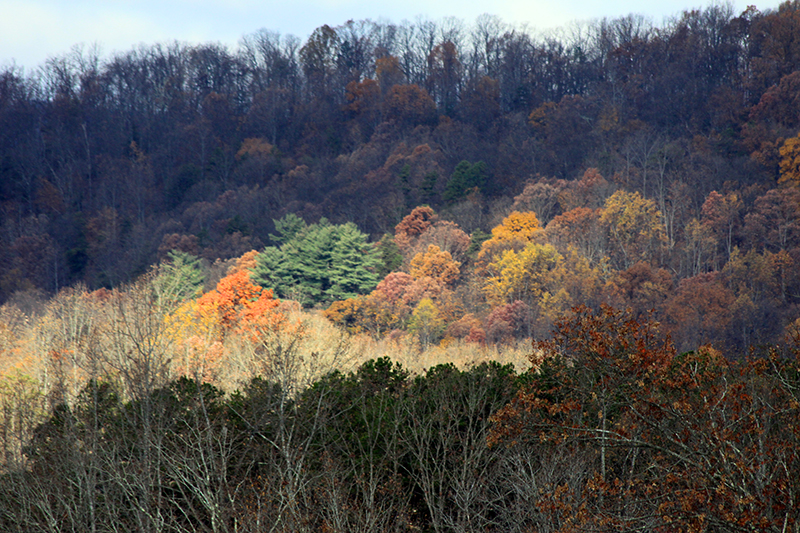
The last of the fall color. Just about all the leaves are down now, and it’s looking very wintery.

Blue Hole. This is where my friends and I did most of our swimming growing up. With the water snakes, timber rattlers, copperheads and ticks. Rural childhood. You can jump off those big rocks below and not hit the bottom of the hole.
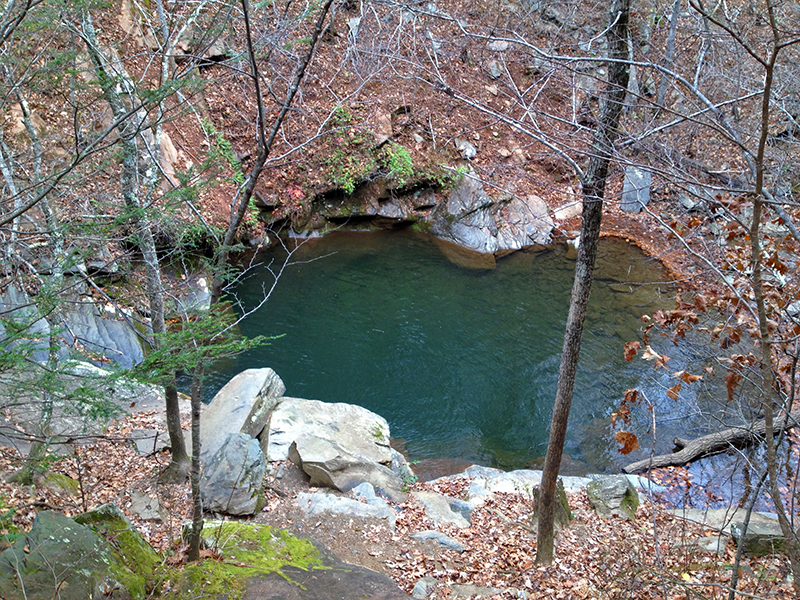
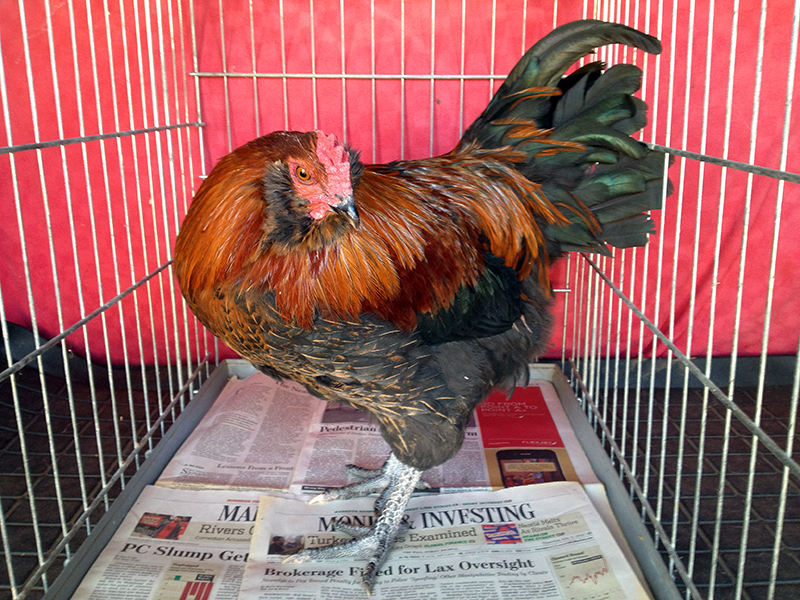
Yesterday I gave away one of the roosters that hatched this past summer. He’s turned into a handsome guy, but there’s no way I need three roosters in a small coop. This guy went home with a jolly lady and her young son—found via CraigsList—to rule over his own flock of hens. So he’s on to a better life, and I am happy about it. I knew he would be well-treated when his new owner asked what he prefers for treats! HA!
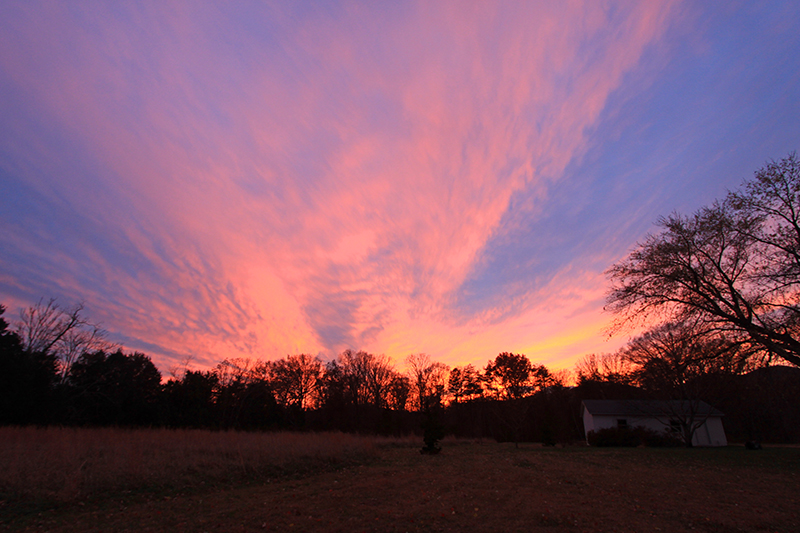
November 18th, 2013 §
Today dawned in marked contrast to the last few days. In place of cool mist and fog were bright sun and almost 70 degree temperatures. I seized the opportunity to complete the year’s final tasks in the garden that surrounds the house.
I started by robbing my compost pile that’s been in the making for almost a year. It’s a mix of garden waste, grass clippings, soiled chicken house bedding, and kitchen scraps. Instead of engaging in a hot composting process, which requires a more precise mix of nitrogen-rich greens and carbonous browns, plus proper moisture and aeration, I just throw everything in a pile in the woods and let time work its magic. Which it does, yielding a worm-full and deeply nutritious mix that every fall gets spread about the farm.

I forked the compost into the big tractor bucket. I prefer using this large bucket when dealing with bulky materials because it can carry much more than the smaller bucket. The downside, though, is that I can’t dig or scoop with this big bucket without damaging the tractor’s arms, so that means lots of hand forking. In many ways this is still necessary, though, as the margins of the pile aren’t well defined and the pile isn’t large enough to efficiently scoop with a small bucket anyway.
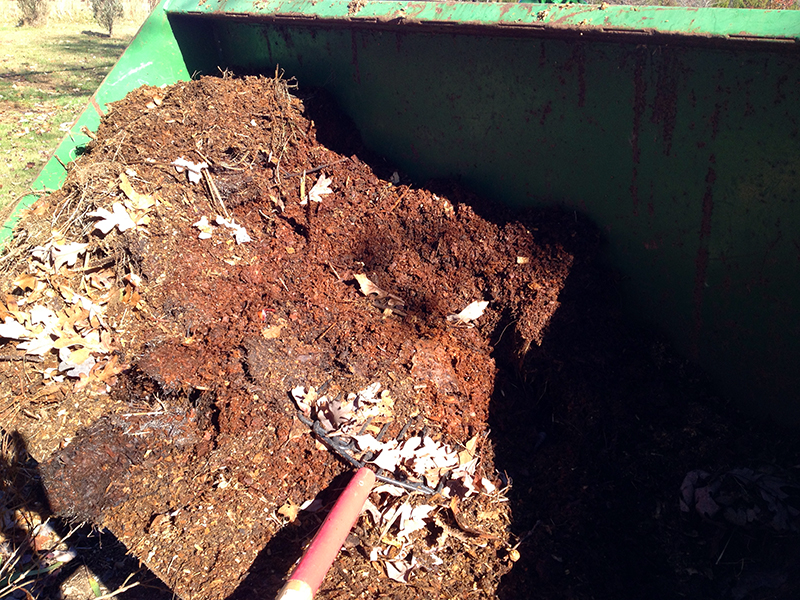
I managed to eek two large buckets of compost out of my pile. It’s not a ton, but I spread it almost an inch thick over all the exposed dirt in the garden and even had enough to pile some extra around heavy feeders, such as the roses.
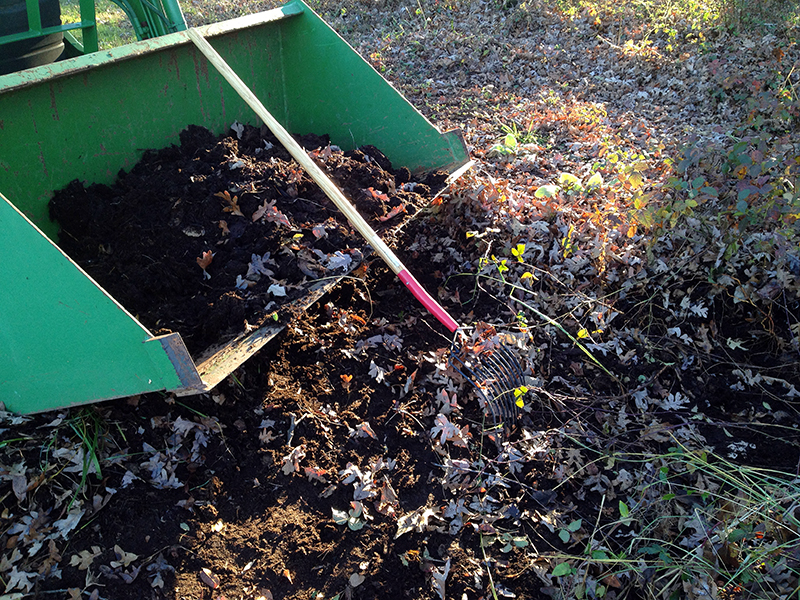
Once the compost was down, I went back for mulch. My target was the remnants of the ten yards that were delivered in early April. They’d been spread about a bit in the field and briars and grass were starting to grow up in the pile.

This required lots of hand forking and tedious, prickly picking through, but I managed to get four big bucketfuls out of a rather insubstantial looking pile. Not only did it feel good to reclaim something for which I’d paid good money, but the eight-month rest in the field had decomposed the mulch the absolutely perfect consistency—damp, dark, crumbly and ready to go to work building soil. It makes me realize I should be ordering all my mulch at least half a year in advance of when I want to apply it.
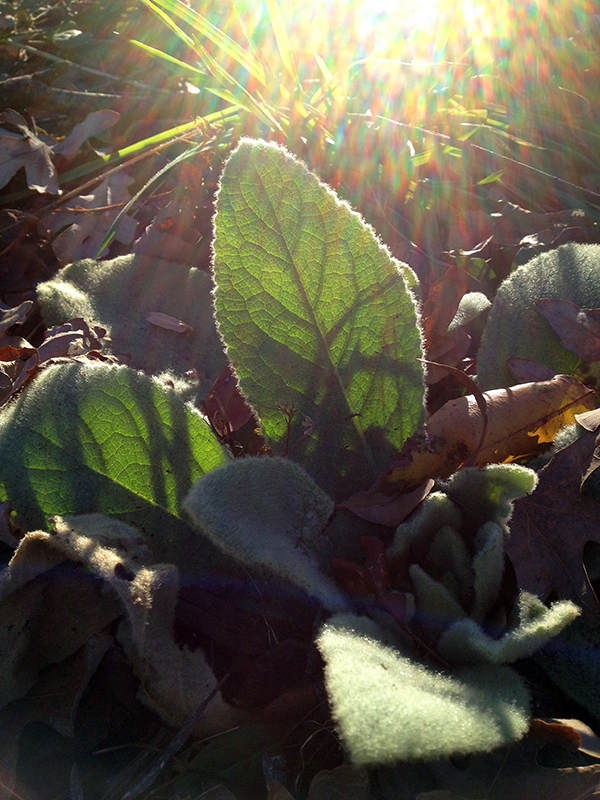
Anyone who’s been reading this blog for a while knows that when it comes to mulch, I prioritize its soil-building properties over any aesthetic contribution it may make to the landscape. The key to building good soil is keeping it mulched with an appropriate material, one that breaks down and adds organic matter to the soil. When you’re working with what I’ve got here—compacted red Virginia clay around a construction site—short of digging out all the native dirt and replacing it the only way to create great soil is through repeated application of amendments such as compost and mulch. Do that for ten or fifteen years and you might get somewhere. I am three years in and my fantasies of dropping a trowel and having it sink blade deep in rich, black soil are a long way off.
But I work at it. And will keep working at it every year as long as I can wield the pitchfork.
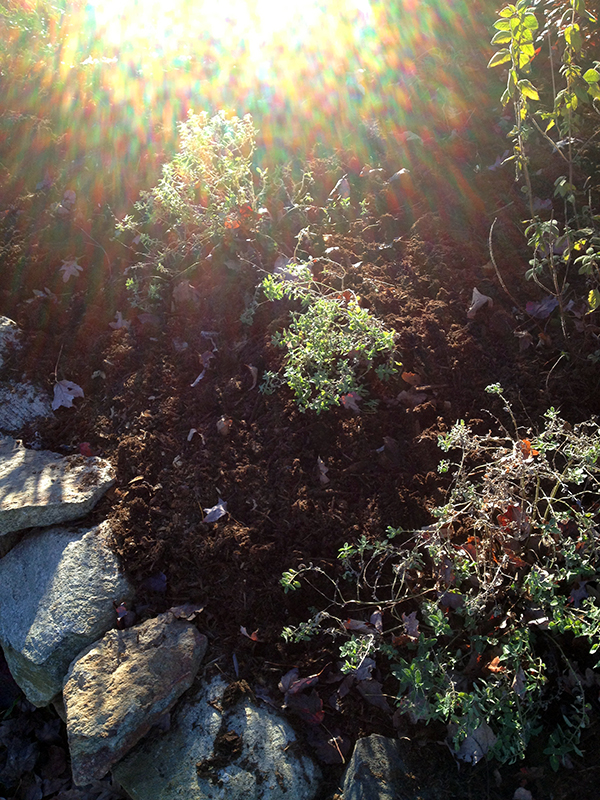
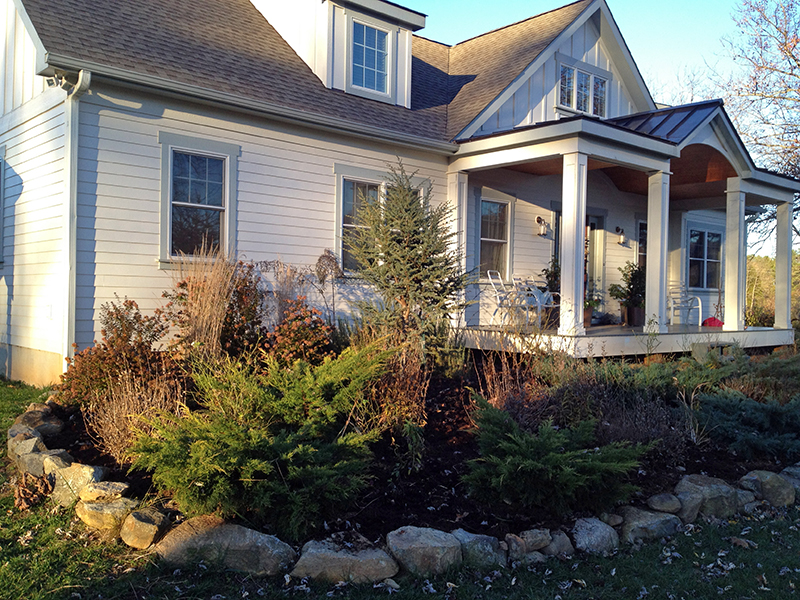
By sundown I could barely move but I was finished spreading compost and mulch, and I felt good about this final gardening act of the year. This is always one of the most physically demanding days of the year, and I am glad to have it behind me. Now I celebrate, and rest easy knowing I have left a nutritious blanket over my garden that will nourish it through this winter and into the spring to come. It’s a good feeling, despite the protest of every nerve and muscle in my bone-tired body. I’m headed for the epsom salts and a scalding bath, and most likely a well-deserved beer.
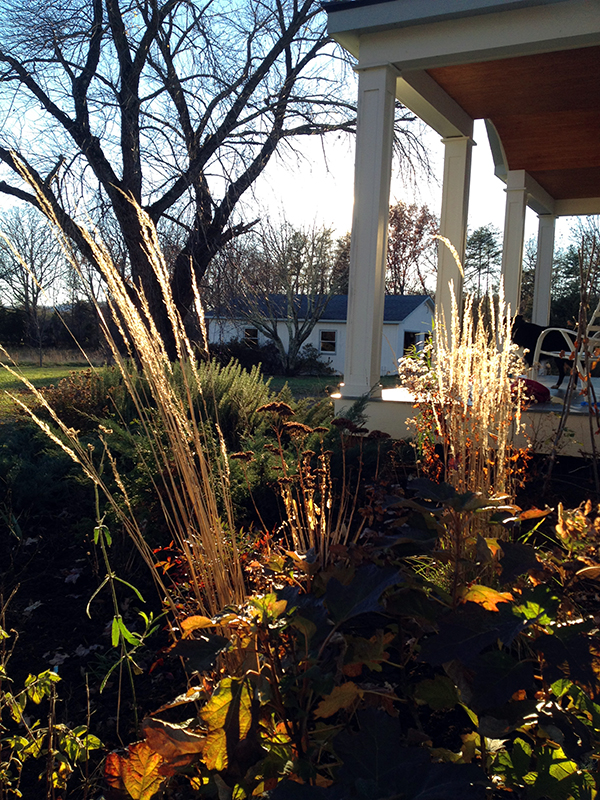
November 10th, 2013 §
As we head into the darkest days of winter, it’s easy to be overwhelmed by the prospect of at least five months of diminished light and cold, brown scenery. In an arsenal of coping strategies that includes Christmas lights, wood stove parties, strong dark beers, and emergency beach vacations, I offer one more tool: bulbs.
Spring bulbs, specifically. The show begins in March with the dwarf iris that shine indigo under late-season snowfall, and carries on to the tiny cerulean scilla that remind me of the September sky. These little spots of blue, planted right along the front walkway, arrive when I’ve about given up and remind me that in just a few weeks the yard will be spotted with yellow daffodils. And once the daffodils arrive I can begin to breathe the scent of thawing soil while I lose myself in spring garden planning and sowing the first sweet peas. I have made it through the winter, and will be okay.
But this late-winter rescue requires some premeditation, actually begun last August when I placed my spring bulb order. This year I am trying, for the first time, Brent and Becky’s Bulbs. Though they ship all over, they are a Virginia-based company, which I like as I believe the odds of anything they grow thriving in my Virginia garden are good. My order arrived a few days ago, and everything looks great. The box was full of 145 nice, plump, healthy bulbs.
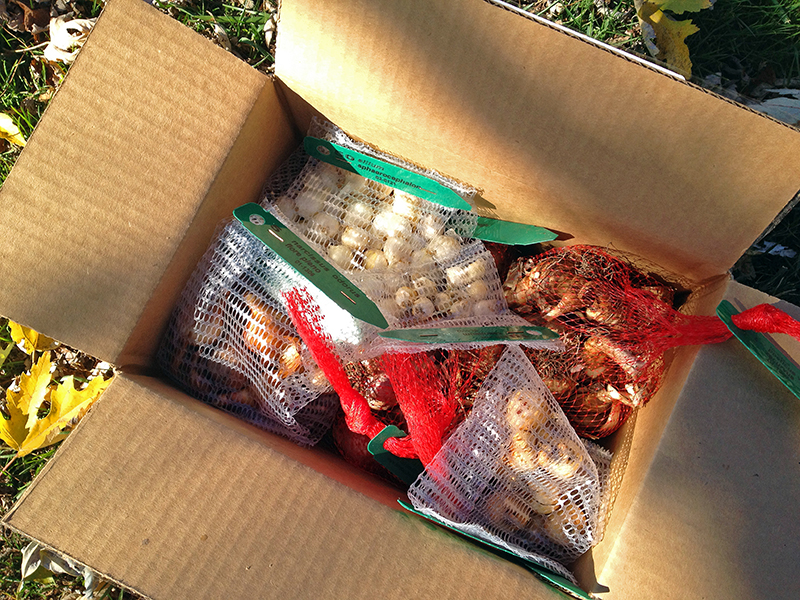
Of course I ordered a few unusual varieties of one of my favorite flowers, daffodils. I can never have enough. And I am experimenting with some alliums, based mostly upon how popular they appear to be in the gardens created by some of my favorite naturalist and New Perennial movement garden designers.
Today I will slip all these bulbs under the soil for their long winter’s nap. And then, if all goes well, we will meet again in March, just when I need them most.
November 4th, 2013 §
Sunday morning dawned just a beautifully as Saturday, though it was cooler and substantially more windy. After lunch I headed outside to keep working at the vegetable garden cleanup. Unfortunately I had overdone it the day before and reactivated an old injury, a muscle spasm in my upper back next to my shoulder blade. In addition to being constantly uncomfortable, it makes turning my head to the right, such as when backing up the car, downright painful. Farming. Let me count the ways it hurts.
Regardless of any physical discomfort, the garden still needed more attention. First I dug out a couple dozen dahlia tubers for winter storage in the garage. I was amazed at the size of most of these tubers—just gigantic. Seeing this, I am suspicious that something caused this year’s dahlias to put their energy into making tubers instead of into flowers. More research on my theory to come.
I moved the dahlias’ labels, which are attached with twist-ties, from the wire support cages directly to the tubers to keep them properly labeled.

I stacked the custom-made cages and wired their ground pins to them for safekeeping. When I get around to it I will layer the tubers in boxes of peat to keep them from either drying out or rotting during winter. Last year I hung the tubers in mesh bags in the garage and lost some of them to drying out, so I will try a different technique this year.

Then I had to figure out what to do with the Glass Gem corn stalks. I tried digging one stalk out, but the root ball that came with it was so massive and full of soil and beneficial worms that I realized I’d be transplanting most of my hard-won, improved garden soil directly into the woods if I chose that route. So I decided to chop each stalk off at the ground and hope that the root balls would just decompose and continue to feed the soil without the major disturbance of digging. We’ll see. I figured that come next spring, anything I’d want to plant in this area can be tucked amongst any stalks or root balls that may be left over.
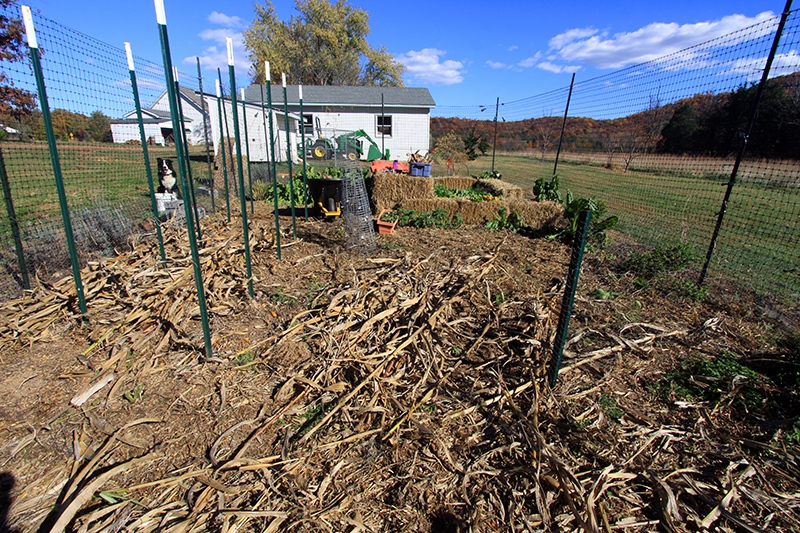
I am undecided about what to do with the stalks. I am heading toward leaving them on the ground over the garden. They will form a nice mulch layer to protect the soil below during winter, and if they’re still around in the spring they’ll be easy to pick up and remove to the compost pile. I plan on putting down a layer of compost then heavily mulching with straw anyway, so these corn stalks perform much the same function and help stretch the straw budget.
I still need to get the tomato stakes out, and then the next step involves shoveling compost into the garden and spreading straw. But as I was not in great compost-shoveling condition with this muscle knot, once I got the dahlias up and the corn down I quit garden cleanup and headed to town for an hour and half of vigorous vinyasa yoga in a warm studio, followed by liberal application of the gym’s hot tub jets to my back muscles.
November 3rd, 2013 §
Anytime after the first freeze of fall I am on the lookout for a few days of nice weather in order to put the garden to bed. This weekend was perfect for the job, with temperatures in the 60s, bright blue skies and sun streaming through the red, orange and yellow trees. Such glorious weather is, I suppose, a small consolation for what is one of my saddest markers of seasonal change. Take a look at this pathetic sight:
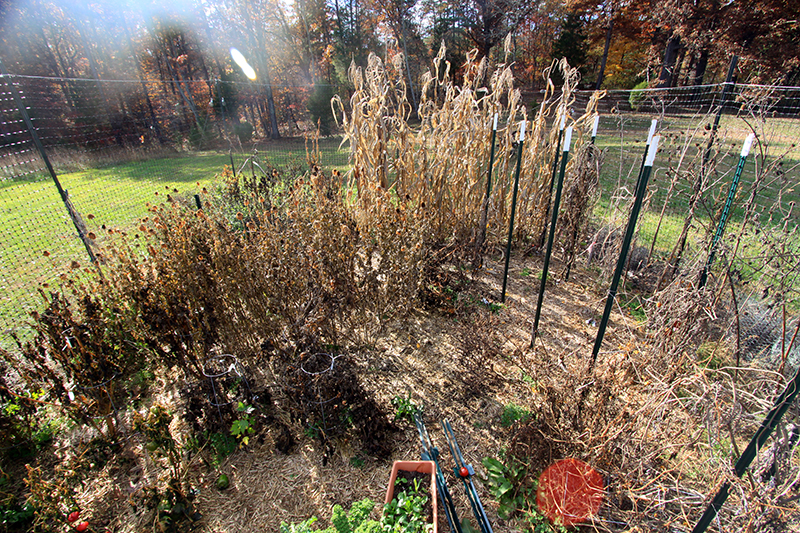
I started with the tomatoes, cutting them down from their stakes.
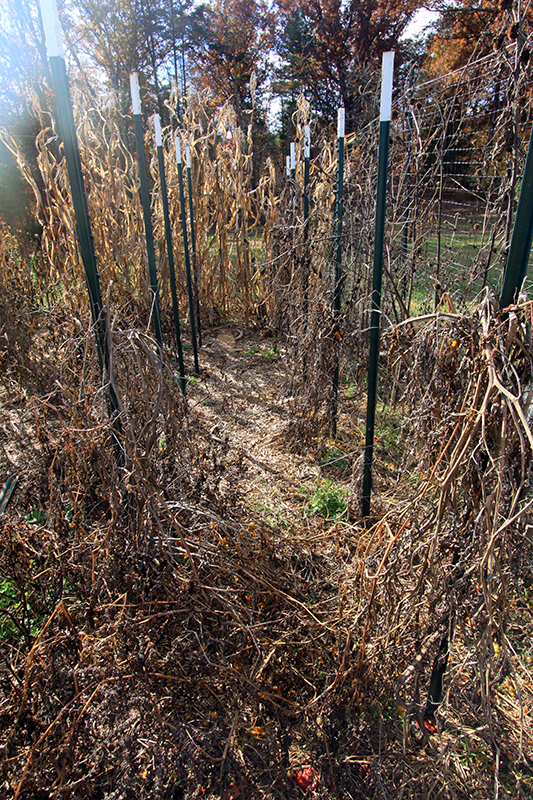
I always use cotton or jute twine to stake my tomatoes so that at the end of the season everything can go right in the compost, which beats having to pick pieces of plastic or wire out of the jumbled vines. I wasn’t too meticulous with picking up the dropped fruit as I plan on running the chickens in here during winter and they will appreciate the treats.
Then I moved on to ripping up the cosmos and zinnias, and as I did I saved seed heads from varieties that did particularly well. I plan to scatter these seeds over some bare spots in hope of starting a wildflower patch.

Then I cut the hyacinth bean vines off of the deer fence. A tedious job, indeed, to avoid cutting the plastic fence. Next year I will sow my hyacinth bean up the sides of the metal chicken run. Finally I pulled the frozen peppers out. I was annoyed at myself to find that there were so many peppers that I hadn’t harvested before it was too late. This is what happens when the first frost happens when the farmer is out of town for a couple of days!

Then I took a break from the vegetable garden to walk through the pastures, cutting out the prickly shrubs that are the first woody plants to initiate reforestation of cleared areas. It took several big tractor bucket loads to get everything to the compost and brush piles in the woods.
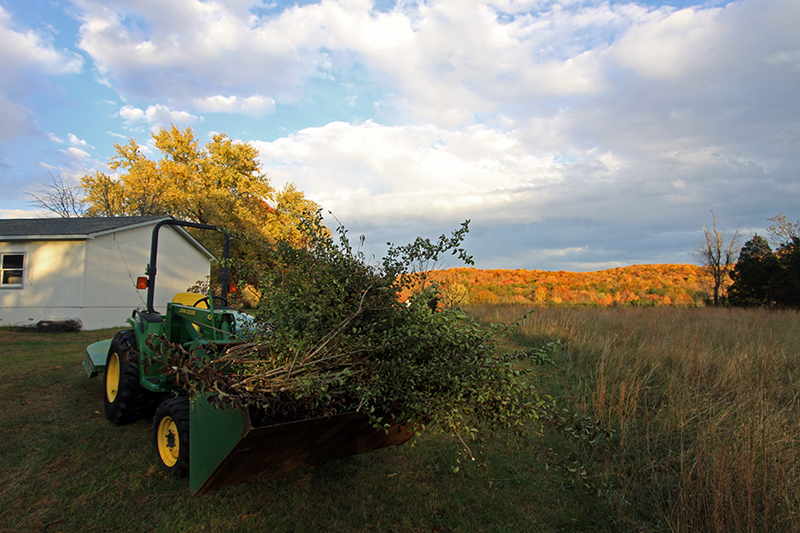
By then the sun was setting and I had been working outside for more than seven hours in a row. So when the chickens headed into roost, I did the same, straight for a hot epsom salt bath. Up next: day two of vegetable garden cleanup.
October 26th, 2013 §
The 2013 growing season came to an end last night with the first freeze of the fall. When I woke up this morning, it was 26 degrees and the ground was covered in thick white frost. 
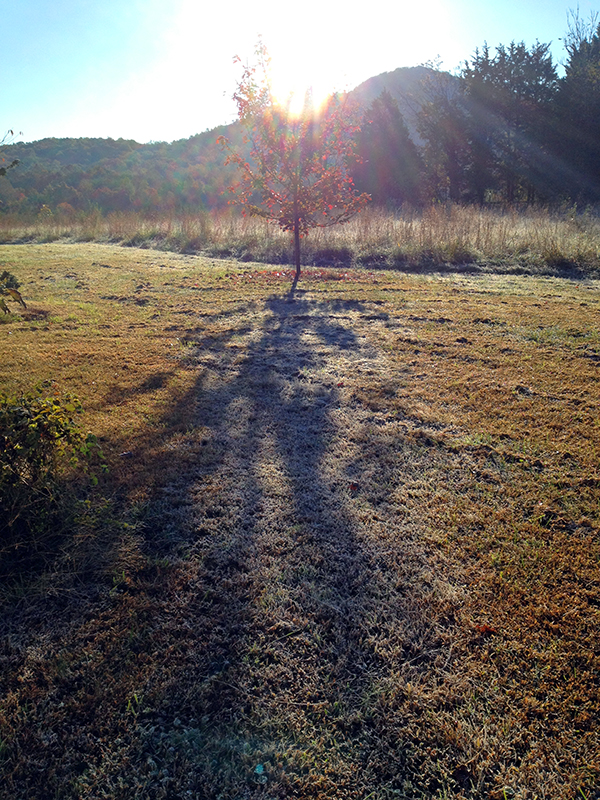
A brisk walk around the farm revealed blackened and sagging flowers, mottled and falling leaves, and the last of the garden peppers reduced to mush inside skin. It is always, for me, the saddest morning of the year. It means no more digging in the dirt and no more daily joy watching my labor become food and flowers. Now all that’s left to do is tear out the dead plants and drag them to the compost pile.
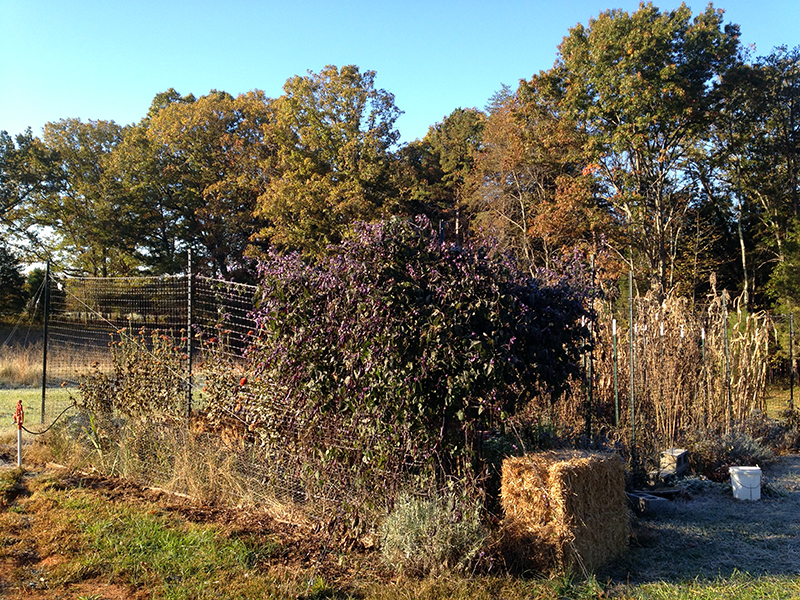
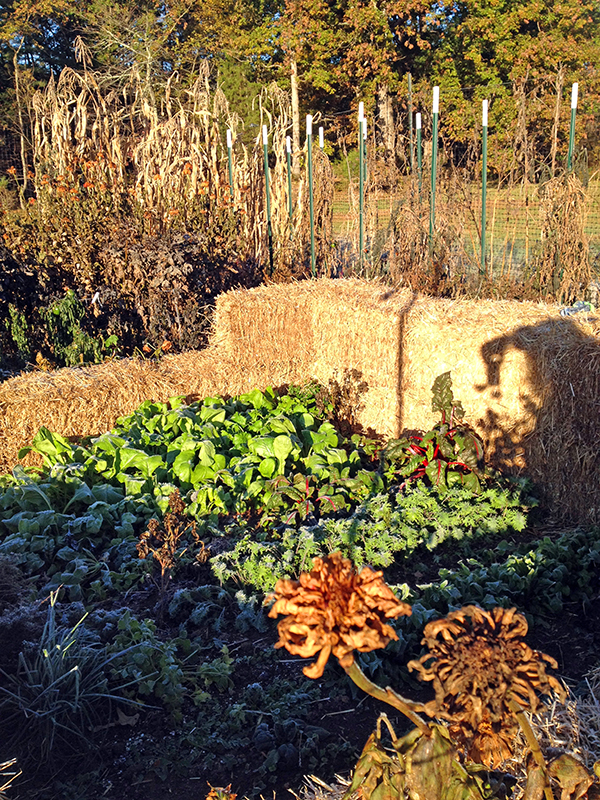
I suppose the only saving grace of this inevitable transition is that it’s now woodstove season. I made my first fire this morning to warm up a 50-degree house. I hadn’t turned my heat on yet this fall, and now it’s up to Jotul to beat back the chill. The stove started right up, drew perfectly, and seems so happy to be back to work and the center of attention. It is the warm white heart of this home.
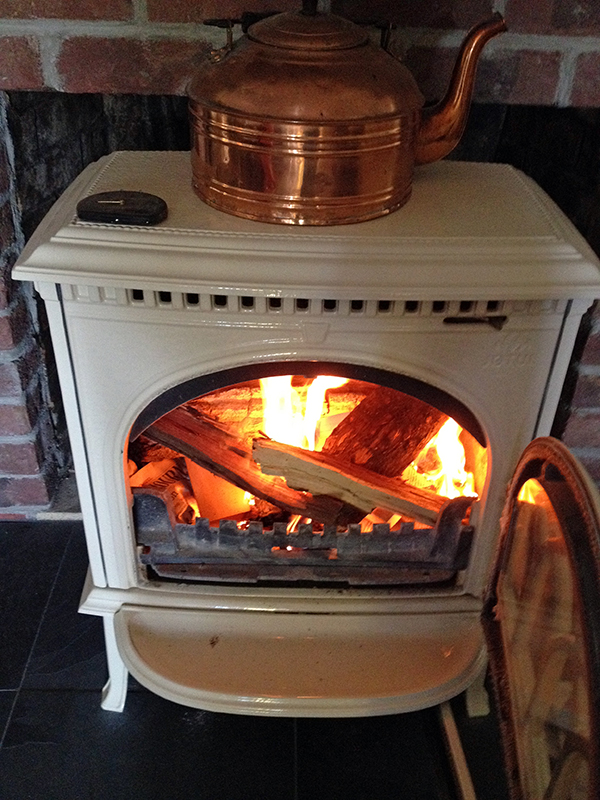
I’ll be back soon with the 2013 garden success and failure post, as well as more info on all sorts of projects that I didn’t get a chance to write about during the busyness of summer. But now it’s time to go put another log on the fire.



























































